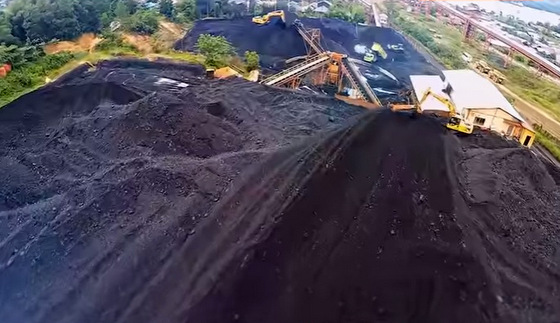Excerpts from analyst's report Resources Prima currently operates on 16% of its concession where its mineral asset and mining facilities are valued at US$275m (while its market cap is about US$192 million based on a recent stock price of 14 cents). The impending grant of a licence to operate on the remaining 84% of the concession would boost Resources Prima's value sharply.
Resources Prima currently operates on 16% of its concession where its mineral asset and mining facilities are valued at US$275m (while its market cap is about US$192 million based on a recent stock price of 14 cents). The impending grant of a licence to operate on the remaining 84% of the concession would boost Resources Prima's value sharply.
Photo: Company
|
CIMB analyst: William Tng, CFA Armed with a 1,933ha concession and comprehensive coal logistics facilities, Resources Prima is poised to mine greater value from higher coal sales and facility usage as it ramps up coal production (current utilisation rate at 21%) and manages costs better.
|
FY14 net profit was largely impacted by one-off expenses of US$62.6m. Consensus estimates call for a narrowing of losses in FY15, followed by a turnaround in FY16. Near-term catalysts include 1) significant improvement in 4Q results due to absence of one-off expenses and 2) award of the 2nd permit for the remaining concession area.
Short-term coal price weakness, positive demand
Based on World Bank forecasts, coal prices should hit bottom in 2015 and recover subsequently, following curtailment of coal production in countries such as China and Australia. The International Energy Agency is also optimistic that long-term coal demand is still positive, with an average growth rate of 2.1% over the next 5-year period till 2019.
Significant upside from 2nd IPPKH permit
Resources Prima is currently operating on only 308.54ha out of 1933ha for the Rinjani mine. At 16% of the concession, these mineral asset and mining facilities are valued at US$275m by an independent party, Greater China Appraisal Limited. This also reflects significant upside to the existing coal sales volume (9M15: 1.3 million tonnes) when the 2nd “borrow-use” permit is approved.
Favourable coal logistics
Situated just 31km away from the jetty, Resources Prima’s mine enjoys lower transportation costs and better management of operating schedule. Besides being a mining company, Resources Prima’s coal facilities also generate additional income as they are leased to nearby concession owners. Recent implementation of the cost reduction programme will further strengthen its cost advantage.
Key risks
Besides the risk of permit delay and coal price volatility, it is also likely that a royalty hike in Indonesia will materialise in 2015 and affect all coalminers with the IUP licence. Working with a “single customer, single asset” also presents concentration risk for the business. With greater production volume available once the 2nd IPPKH permit is officially obtained, the company can look to alleviate this risk.
The full 9-page report is available here.






